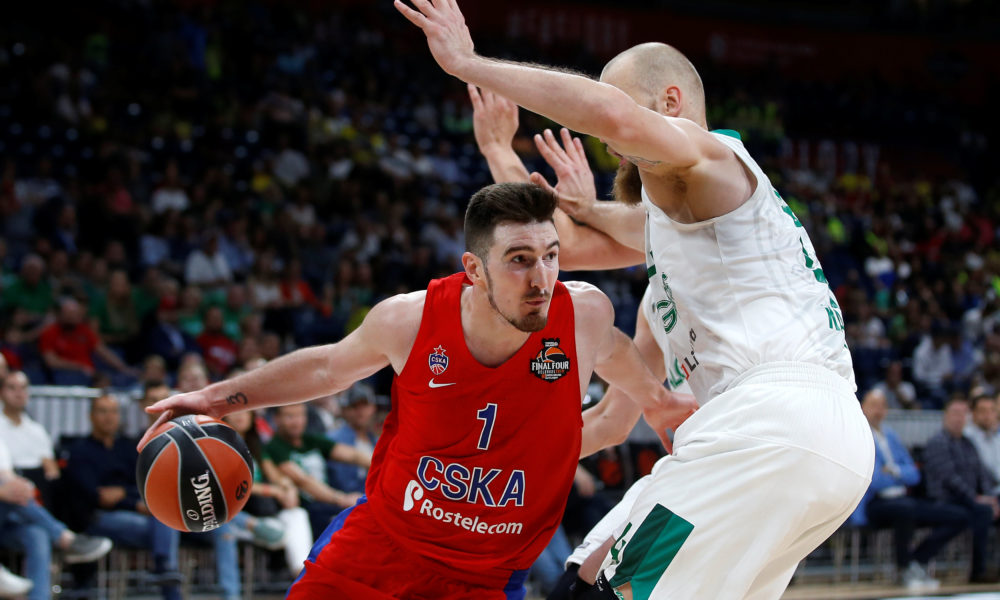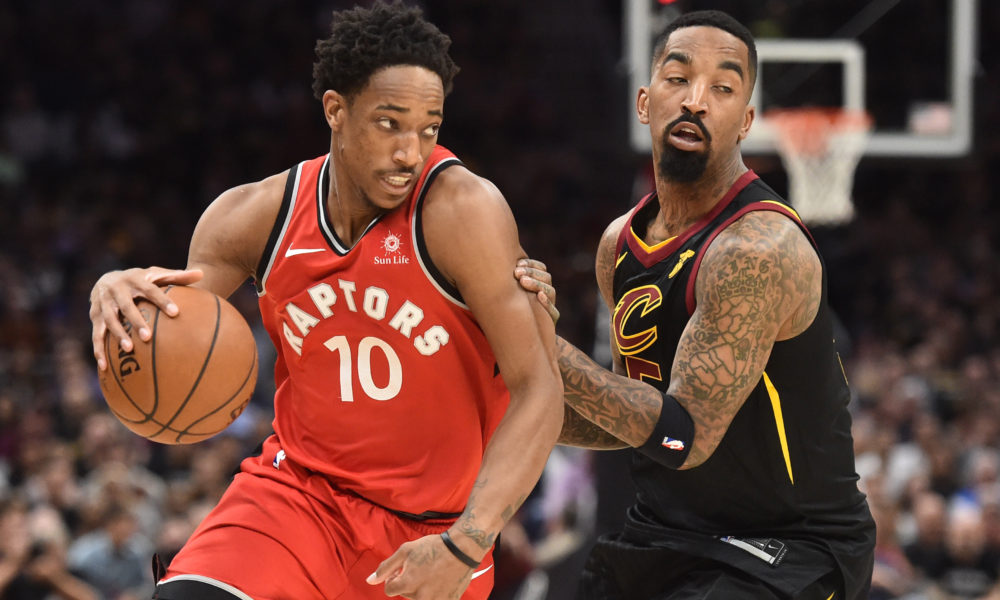You can keep up with all of our player reviews here.
Photo credit: Trung Ho / TrungHo.ca
Lost in all the excitement of the Utah Jazz’s mid-season 180 from mediocrity to quasi-contender was the emergence of undrafted swingman Royce O’Neale. Due to Thabo Sefolosha and Rodney Hood (as always) going down to injuries, O’Neale was thrust into the rotation by necessity, but by January his naturally complementary style had proven itself as much a part of the Jazz’s winning formula as anyone not named Donovan Mitchell or Rudy Gobert.
Rival executives were frustrated, to say the least. They themselves had rounded out their rosters with established names (on way bigger deals) who couldn’t fill the complementary “3-and-D” wing role as well as O’Neale. The 3-and-D wing had become arguably the hottest commodity in the league, save for superstars, and the Jazz managed to find a legit ready-made contributor at 6-foot-6 with a 6-foot-10 wingspan for a bargain just because he only averaged 8 ppg in Europe the year prior? It stumped them. Why couldn’t they find someone like this in the draft? Why is it so difficult to develop a player like this? Where do you find these guys?
Enter Toronto Raptors two-way player Malcolm Miller, 6-foot-7 with a 7-foot wingspan and career 39% mark from three.
—
Theoretically, playing a 3-and-D style should be child’s play for most established NBA wings. All you have to do is take open shots and defend your butt off all game. Nothing more, nothing less. Unfortunately, all too many players try and fail for the same reason: the mental aspect.
Being a 3-and-D player is about playing within yourself. That shouldn’t be so hard. However, the biggest challenge met in trying to play this style is knowing what is “within yourself.” Nearly all the young prospects that teams try to mold into this archetype have been the best players on their team their entire life—and they damn well know it. It isn’t easy for a player who has spent years building up an ironclad ego to justify their high usage playing style to, all of a sudden, take a step back and accept that all the flash in their game – all the fun stuff – needs to go.
The best analogy I’ve heard for this whittling down of skill set is that of a pencil-case. Each skill a player has is its own coloured pencil, and to keep each one sharp they need to work that skill daily. Their step back, spin move, and hesitation pull-up are all bright and flashy coloured pencils, say purple, blue, and red. Conversely, their catch and shoot three, awareness to make the extra pass, and defensive fundamentals – the things that make a 3-and D player – are all relatively dull colours, say white, grey, and black. To become a capable 3-and-D player, like O’Neale, a player must keep the dull ones sharp – dangerously sharp at that – and let all the others become blunt. Not entirely blunt, as any player needs to pull out their do-it-yourself kit from time to time, but far blunter than any prideful gym-rat’s conscience would allow. That’s taxing mentally. Many try and fail, but far more don’t try at all; they love their purple, blue, and red pencils too much.
That is why it is easier for a player like Miller, who was barely top 500 (!!) in the nation his senior year, to adjust his skill set than it is for a former first-round pick. It is easier to build a player up to that secondary role than it is to sculpt their game down to it. And regardless of who you are, it takes time. Both Miller and O’Neale had to spend two years overseas or in the G-League forgetting how to care about getting the shine before finally earning a shot in the league.
—
After going undrafted in 2015, Miller spent his first professional season with the Boston Celtics’ G-League team, the Maine Red Claws, and was arguably a more complete player offensively in that one season than he was this past year with the 905. Per Synergy Sports efficiency data, Miller was more efficient in pick-and-roll, isolation, and posting up with the Red Claws. However, teams are far more interested in Miller now than they were two years ago. Why? Because they don’t need him to be good at that stuff. They’ve already got their stars for that.
In those two years, Miller improved offensively in only one area, the area the NBA wanted him too: His spot up efficiency. He jumped from being in the 63rd percentile up to the mid 70’s. Although that doesn’t seem like much, it is essentially the difference between an average shooter and one that can contribute in the league. That isn’t surprising when you look at Miller’s shot now compared to two years ago. It’s smoother, he gets it off faster, his release is higher, and he moves better without the ball. Miller’s jump shot had been a work in progress since his freshman year at Holy Cross where he only hoisted 20 total threes the entire season, so two years of high-level reps can make all the difference.
This progression as a complementary player continued when he was given some run with the 905’s parent club this past year after OG Anunoby went down with an injury. Miller wasn’t flashy, he didn’t put up big numbers or have any highlight plays, he did what he was asked: Play his role. He took open threes, beat closeouts for layups, and defended like his NBA life depended on it (which it did). Nothing more, nothing less.
Although it wasn’t exciting to watch, Miller was effective with the Raptors as he finished in the 89th percentile for offensive efficiency and the 97th percentile for defensive efficiency for those 12 games (per Synergy Sports). The highlight of his tenure came against Indiana, when Casey entrusted him as the primary defender on All-NBA guard Victor Oladipo. It was clear that Miller’s combination of length and quickness bothered Oladipo, as he finished a meager 4-of-11, with plenty of uncharacteristic bad misses and reckless turnovers. Performances such as this one are the reason fans were so surprised (and disappointed) when the front office elected to leave him off the postseason roster in favour of Lorenzo Brown. Although he likely wouldn’t have made a huge difference, his unique defensive skill set may have made him an intriguing LeBron-defending placeholder when Anunoby left the court.
—
Although a game like Miller’s looks passive at times, that is expected as a 3-and-D player. In talking about the epitome of their kind, Trevor Ariza, Zach Lowe described him as vital to the Rockets success, and yet, “easy to miss.” The style itself is built upon passivity. The ball never sticks with them. They provide enough spacing for the stars to do their thing, and they can hold their own when switched onto virtually anyone on the court. They’re the cog that allows the machine to run.
When I spoke to Miller’s former teammate in Alba Berlin (and Team Canada legend) Carl English about Miller, English said he believed Miller can be a “great defensive player” in the league due to his desirable combination of length and basketball IQ. Additionally, he pointed to Miller’s “wonderful work ethic” as the reason for his growth over the last two years, and suggested he would be a great addition to any organization this offseason. That’s high praise from someone who knows firsthand how difficult it is to break into the league.
If you watched the draft past the lottery on Thursday you saw plenty of teams go fishing for a young 3-and-D prospect that could contribute right away on a cost-controlled deal. If Miller has an impressive summer league, don’t be surprised if another team realizes what they’ve been looking for has been under their nose this whole time and steals him away.



